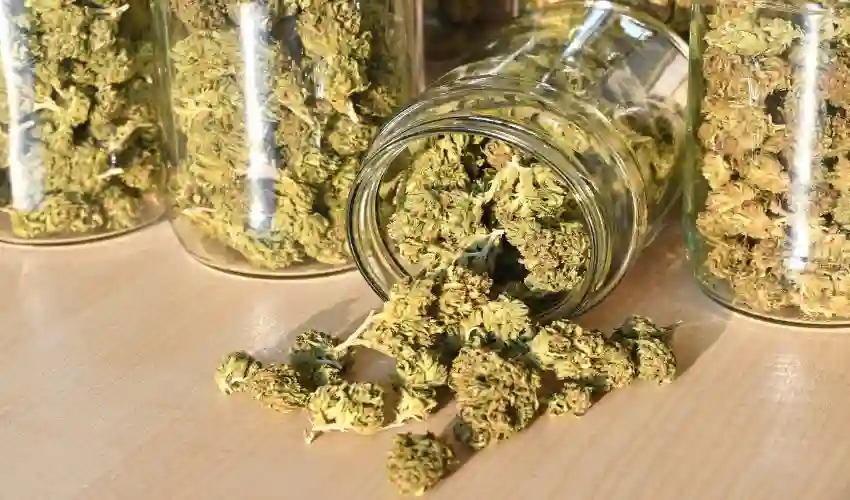The CBD industry has witnessed exponential growth in recent years, with a significant portion of this expansion attributed to the rising popularity of CBD flower products. These products have evolved considerably since their inception, adapting to consumer demands, advancements in cultivation techniques, and regulatory changes. This article explores the journey of CBD flower products, from their early beginnings to their current status as a mainstream wellness option.
The Early Days of CBD Flower
CBD (cannabidiol), a non-psychoactive compound found in cannabis plants, gained attention for its potential therapeutic benefits. Initially, CBD was primarily available in oil and tincture forms. However, as understanding of the compound’s benefits grew, so did the interest in consuming it in its natural form. This led to the emergence of CBD flower products, which are essentially the dried and cured buds of hemp plants high in CBD but low in THC (tetrahydrocannabinol), the psychoactive component of cannabis.
Advancements in Cultivation
The evolution of CBD flower products is closely tied to advancements in cultivation techniques. In the early days, hemp strains with high CBD content were relatively rare. However, through selective breeding and genetic research, cultivators have developed strains that are rich in CBD while maintaining minimal THC levels, adhering to legal requirements.
Indoor and greenhouse growing methods have also played a crucial role in the evolution of CBD flower products. These controlled environments allow for precise manipulation of growing conditions, resulting in higher quality and more potent flowers. Additionally, organic and sustainable farming practices have gained traction, meeting the increasing consumer demand for clean and eco-friendly products.
The Rise of Diverse Strains and Products
As cultivation techniques improved, so did the variety of CBD Flower strains available. Today, consumers can choose from a wide array of strains, each with its unique flavor profile, aroma, and effects. Popular strains like Charlotte’s Web, AC/DC, and Harlequin have become household names, known for their distinctive properties and therapeutic potential.
The diversification of CBD flower products extends beyond just strains. Manufacturers have introduced pre-rolls, infused products, and even CBD flower combined with other herbs to enhance the overall experience. These innovations cater to different preferences and lifestyles, making it easier for consumers to incorporate CBD into their daily routines.
Legal and Regulatory Milestones
The legal landscape surrounding CBD has been a significant driver of its evolution. The 2018 Farm Bill in the United States was a landmark moment, legalizing hemp and hemp-derived products, including CBD, at the federal level. This legislation provided a framework for the cultivation, processing, and sale of hemp, paving the way for the mainstream acceptance of CBD flower products.
Despite federal legalization, regulatory challenges remain. Different states and countries have varying laws and regulations regarding CBD, creating a complex and sometimes confusing market. However, as more research emerges supporting the benefits of CBD, and as public perception continues to shift, further regulatory clarity and standardization are expected.
Consumer Education and Awareness
The evolution of CBD flower products is also marked by increased consumer education and awareness. Early misconceptions about CBD, often conflated with THC and its psychoactive effects, have been gradually dispelled through educational efforts. Industry stakeholders, including manufacturers, retailers, and advocacy groups, have played a vital role in informing the public about the differences between CBD and THC, as well as the potential health benefits of CBD.
Educational initiatives have also focused on responsible usage, helping consumers understand dosage, potential interactions with medications, and the importance of choosing high-quality, lab-tested products. This shift towards informed consumption has contributed to the growing acceptance and popularity of CBD flower products.
The Future of CBD Flower Products
Looking ahead, the future of CBD Flower UK products appears promising. Ongoing research into the therapeutic potential of CBD is likely to uncover new benefits and applications, further driving demand. Innovations in product development, such as nanoemulsion technology for improved bioavailability, are expected to enhance the effectiveness and convenience of CBD flower products.
Moreover, as the legal landscape continues to evolve, greater market opportunities will emerge. International markets, in particular, hold significant potential, with countries like Canada and parts of Europe already embracing CBD.
In conclusion, the evolution of CBD flower products reflects the broader trends in the cannabis industry: rapid growth, innovation, and increasing acceptance. From humble beginnings to a diverse and dynamic market, CBD flower products have carved out a significant niche in the wellness sector, offering consumers a natural alternative for improving their quality of life.
